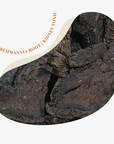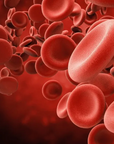

Rehmannia Root | Kidney Tonic Aid
Rehmannia Root (Rehmannia glutinosa)
Traditionally used in Chinese herbalism, Rehmannia root is valued for supporting blood and kidney health. It is often included in herbal formulas for individuals with low iron, iron deficiency, or imbalances affecting the kidneys and adrenal system. In traditional Chinese medicine (TCM), it is considered a nourishing tonic that helps “cool the blood,” replenish vitality, and support the body during periods of fatigue or depletion.
How it’s used:
Rehmannia is commonly prepared as a decoction by gently simmering in water with other herbs or taken as a powdered extract or capsule. It is rarely used alone and is often combined with complementary herbs to enhance its supportive effects.
Common Herbal Pairings:
For blood & iron deficiency:
-
Dong Quai (Angelica sinensis)—“female ginseng,” nourishes and moves blood
-
White Peony Root (Paeonia lactiflora)—calms liver, supports blood production
-
Goji Berries (Lycium barbarum)—rich in antioxidants and nutrients
-
Chinese Foxglove Root aka Rehmannia root, is the primary tonic herb
I have all these herbs; just select the bundle of Iron Tonic.
Brewing Instructions:
-
Measure 1–2 teaspoons of the dried herb blend per 8–10 oz cup of water.
-
Simmer in a covered pot over low heat for 20–30 minutes (roots like Dong Quai and Rehmannia need a longer decoction time to extract their compounds).
-
Strain and enjoy warm.
-
Optional: Add a touch of honey for sweetness if desired.
Serving Suggestion: 1 cup daily, preferably with or after meals.
For overall vitality & recovery:
-
Astragalus Root (Astragalus membranaceus)—immune and energy tonic
-
Ginseng (Panax ginseng or Panax quinquefolius)—boosts energy and resilience
-
Licorice Root (Glycyrrhiza uralensis) – harmonizes herbal formulas
Note: This information is for educational purposes only and is not intended as medical advice. Always consult a qualified healthcare practitioner before starting any new herbal regimen.
These statements have not been evaluated by the Food and Drug Administration. The information was taken from clinical studies. These products are not intended to diagnose, treat, cure, or prevent any disease.


